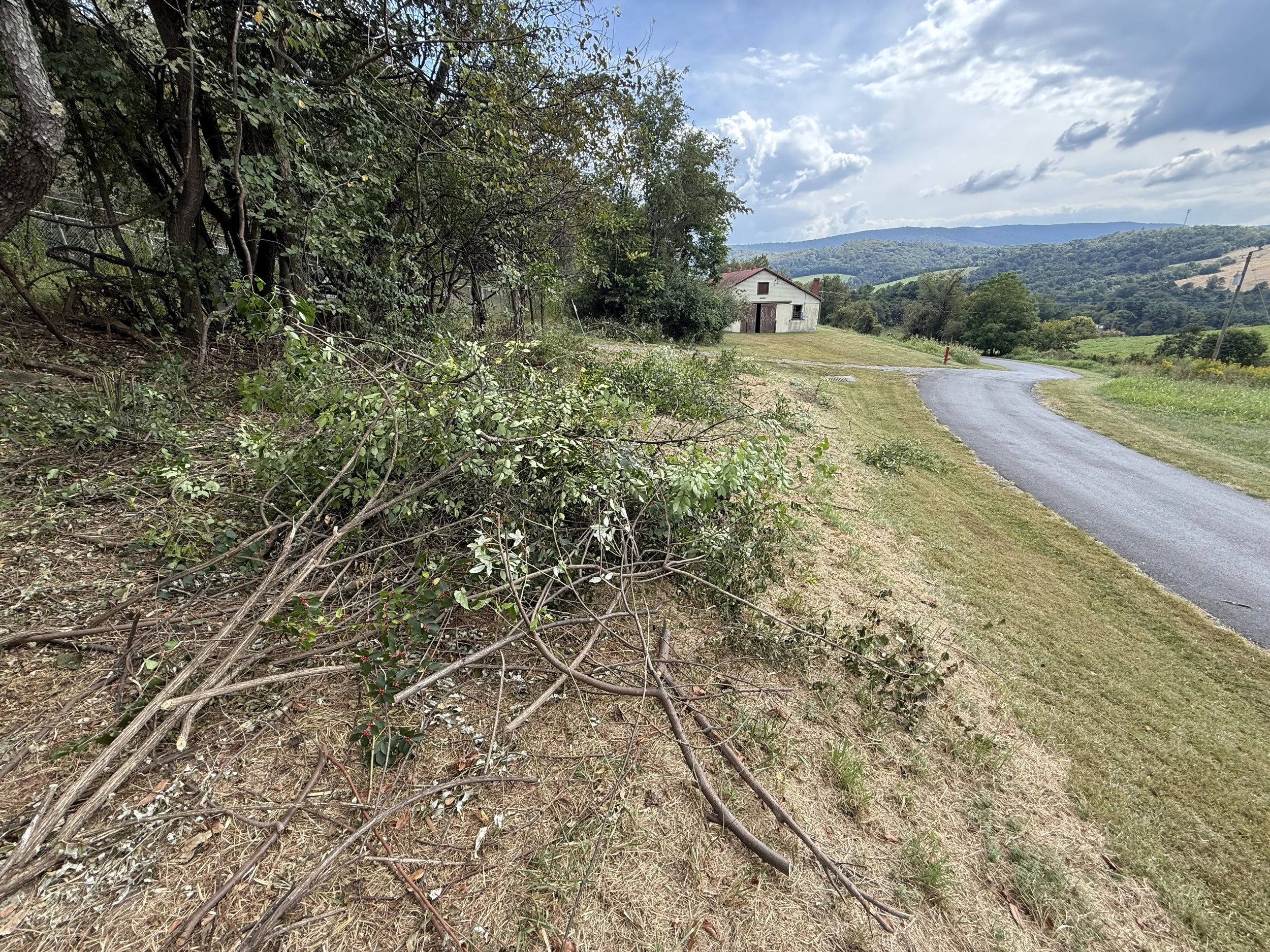Waging war on invasive species.
Week four at SMSC was the first week we attended our practicum placements. My practicum assignment for this semester is with John Whitmoyer, the land manager at SCBI. The main focus of our work this semester will be on invasive species management within SCBI.
Our first day with John began with a tour of the facility along with the many species of grass, trees, and animals that inhabit the grounds. We ventured up and down dirt and gravel roads going places I had no idea a 2004 Chevy Colorado could go. John stopped along the way, pointing out where invasive species had begun to grow and other features of the land. Along the way, we encountered a couple of downed trees, which John had prepared for as he pulled out the chainsaw and began cutting away the trees. After a strenuous morning watching John cut down trees, we took our lunch break and came back for our afternoon shift.
During the afternoon, John took us to a familiar spot, Racetrack Hill, where he pointed out a grove of invasive Autumn Olive and Oriental Bittersweet that had taken over a tree line in between two roads. I was handed a handsaw, lopper, and pruning shears and given the task of removing all the Autumn Olive and Oriental Bittersweet from the grove. So it began, the war against the invasives. The invasives struck first. As I walked into the grove, I was attacked on many fronts by multiflora roses as I attempted to reach the base of one of the Autumn Olive trees. I quickly returned a blow by hand sawing multiple Autumn Olive trees down and removing them from the grove. The battle was short, roughly two hours in total, but in the end, the land management crew won, taking home the victory as we towed the Autumn Olive trees to the dump.
The experience of using my hands and getting in the field and starting to handle invasive species was eye-opening. At SCBI there are talks being given each week about technology, innovation, and new tools in conservation. However, this was almost the exact opposite, using extremely basic tools and a small background in plant identification and getting to work directly on an area that was in desperate need of maintenance. This side of conservation, despite not being on the cutting edge, is something I can see myself doing in the future with a larger group. While I was working, I was thinking about how, if there were enough people that could be brought together and trained in basic tool usage and plant identification, how much work could be done with invasive species management. In the future, I hope that I can bring my skills in plant identification and invasive species and use this in my local communities to handle areas that are in need of restoration in my hometown.
Our pile of invasive Autumn Olive (Elaeagnus umbellata) that we removed from Racetrack Hill.

